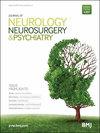A HEURISTIC THEORY OF NEUROSIS.
引用次数: 61
Abstract
Introduction IN a recent communication (Slater, 1943), based on a statistical survey of two thousand neurotic soldiers, a hypothesis was developed to the effect that there was a generalized predisposition towards neurosis, which was in large part responsible for the appearance of neurotic symptoms in the individual when placed under stress. Evidence was adduced that this constitutional tendency, though it might be affected by such environmental factors as early processes of conditioning, was, at least in part, dependent on hereditary factors. Evidence was also brought that it could usefully be considered in a quantitative manner, and that so considered the intensity of the constitutional predisposition varied inversely with the degree of stress under which the individual was placed before breakdown occurred, i.e. the greater the intensity of the constitutional predisposition, the less was the degree of stress required to produce breakdown, and vice versa. On this last point, strong confirmatory evidence has recently been supplied by Symonds (1943). He states " the incidence of neurosis in different tactical duties varies directly with the amount of hazard encountered, as measured by the casualty rates." He also provides a table correlating the degree of predisposition with the degree of stress in 2,200 neurotic casualties, which shows that the degree of flying stress falls steadily as predisposition increases. From his table a correlation coefficient between the two variables of -0-26±0-02 can be calculated. In the paper referred to no very detailed analysis of the nature of the neurotic predisposition was undertaken. Yet the frequency of various traits of personality was shown to vary significantly in the several diagnostic groups, and significant and fairly high correlations were found between personality traits and eventual symptomatology. There was, therefore, evidence of constitutional heterogeneity in the population investigated. On the other hand all the neurotic personality traits were noted as being at least sometimes present in all the diagnostic groups, and the same was true of all the classes of symptoms observed, with the exception of obsessional compulsive symptoms and psychotic and organic symptoms. This means in effect that the different neurotic groups fade off into one another clinically, and do not form qualitatively distinct groups. This observation is one with which every clinician is in practice familiar. This, then, is the starting point of the argument which is developed in the following pages. It is our purpose to reduce the hypothesis already propounded to precise terms which may be handled statistically, lind made the basis of predictions which can be checked by further observations. What is involved is, in fact, a general theory of the nature of the neurotic constitution.神经症的启发式理论。
本文章由计算机程序翻译,如有差异,请以英文原文为准。
求助全文
约1分钟内获得全文
求助全文

 求助内容:
求助内容: 应助结果提醒方式:
应助结果提醒方式:


